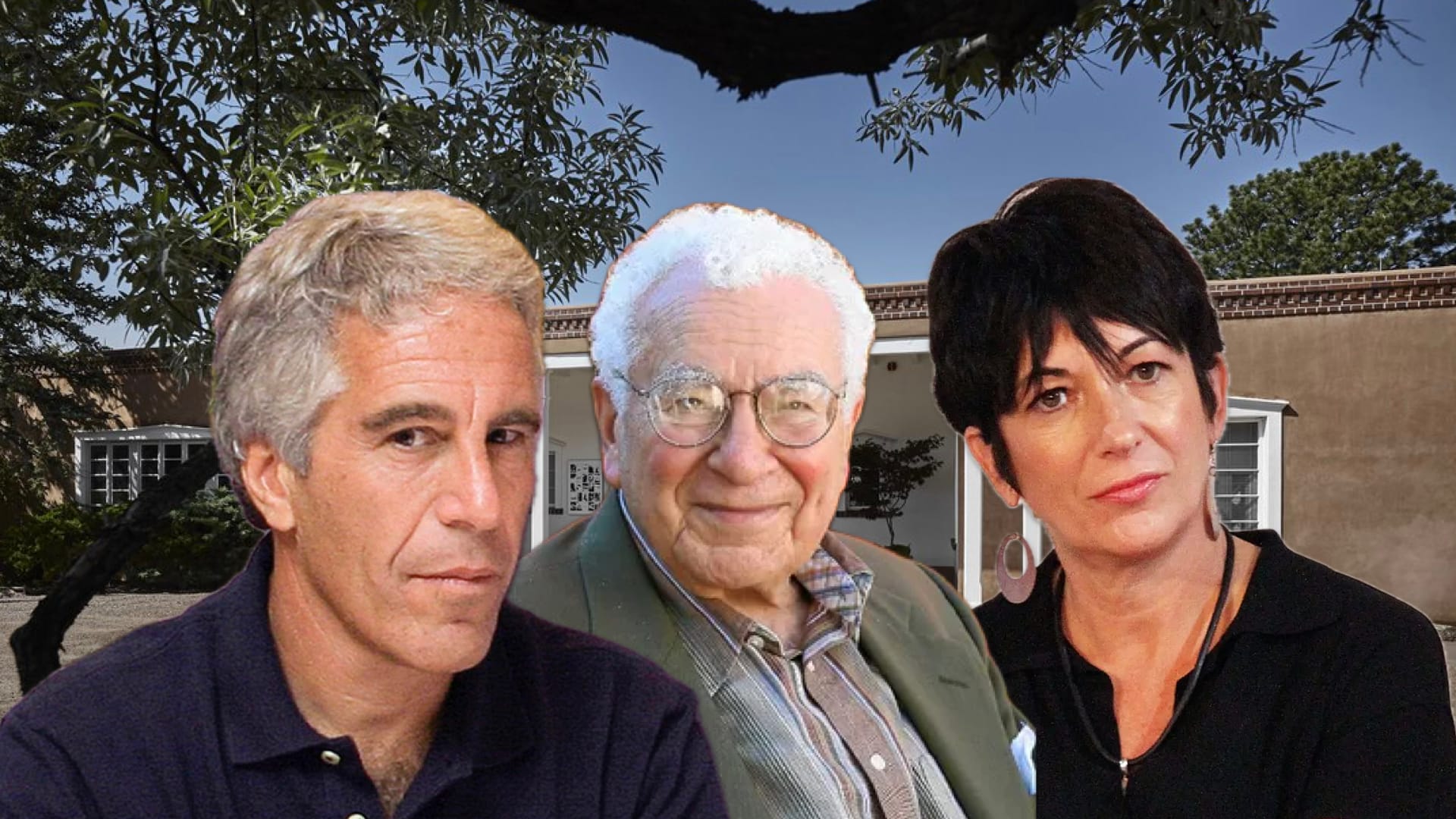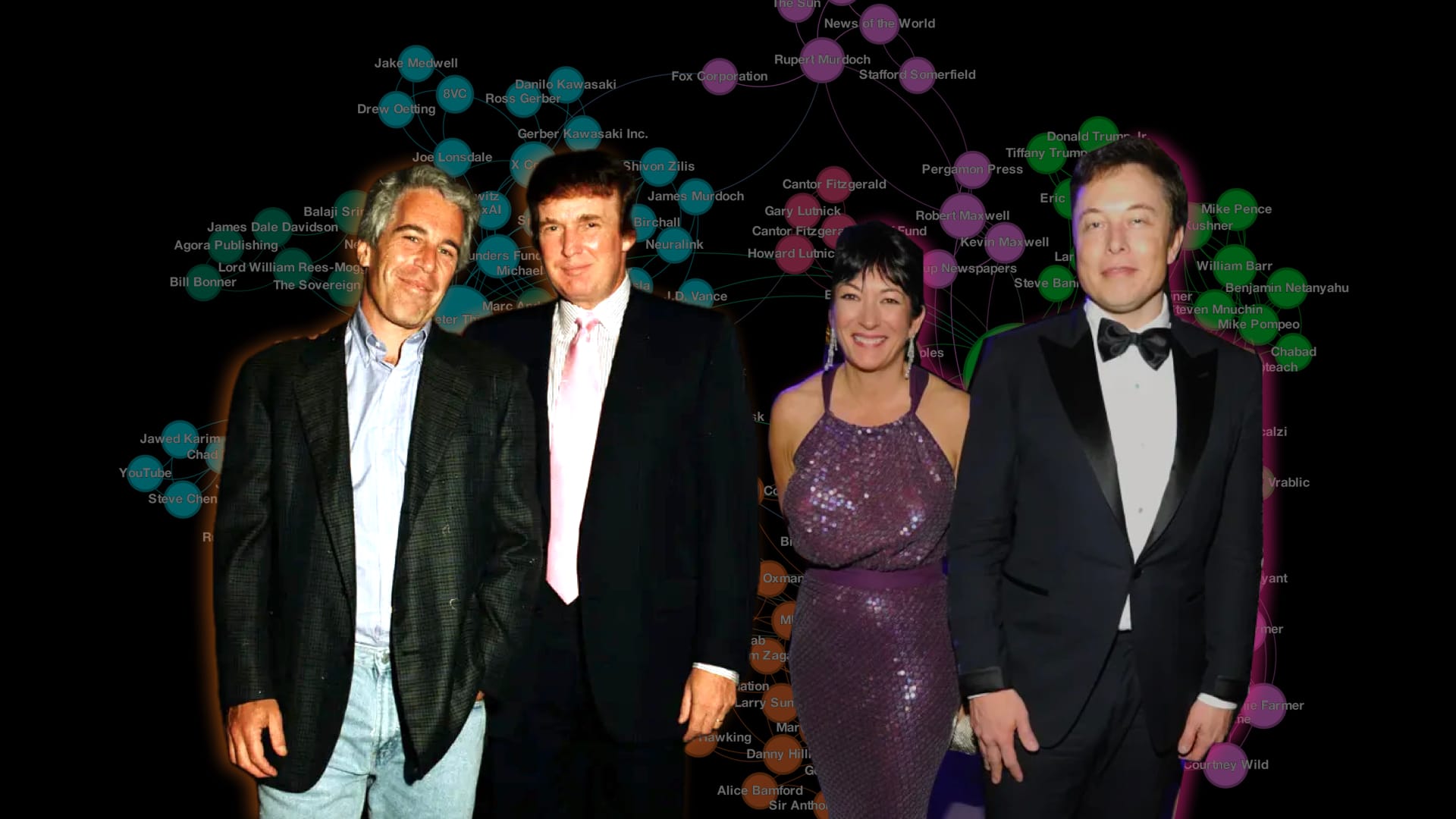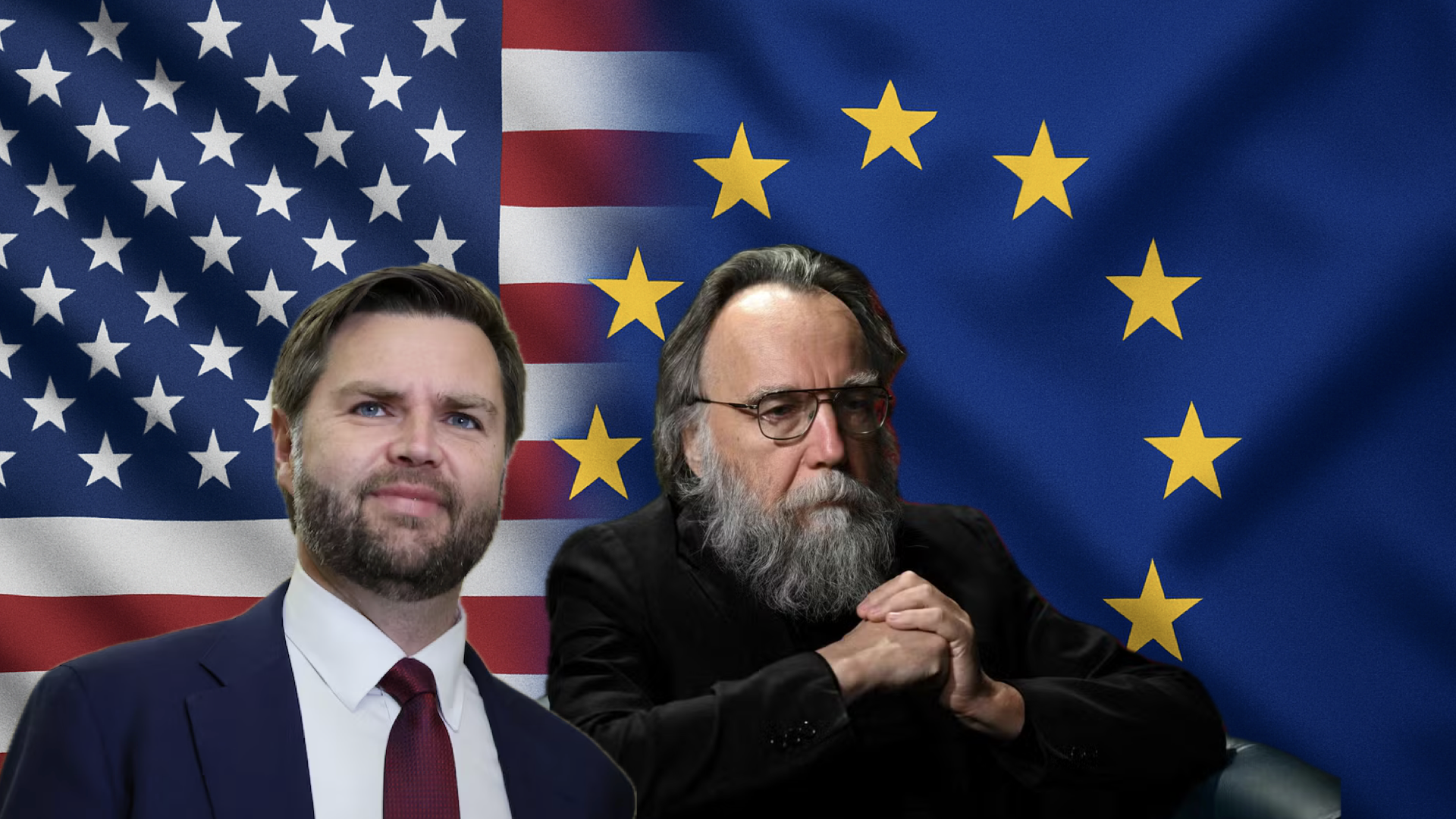Part One: Just what was Jeffrey Epstein doing in Santa Fe?
Was Jeffrey Epstein part of Russia's broader war on the West? In this multi-part series we examine his obsession with nuclear scientists, eugenics, transhumanism, and influence. What we found will likely surprise you.

According to new testimony by Ghislaine Maxwell, Jeffrey Epstein was perpetually busy working — on the phone and having meetings. But towards what end? Speculation abounds, but there has been relatively little inquiry into his activities outside of the allegations of sexual abuse. And while those claims are material, they cloud understanding of his other pursuits.
Why did he choose to infiltrate the world of science, and why did he seek out specific scientists? Did his goals overlap with other broader geopolitical objectives besides blackmail, as has been so widely assumed? Was Jeffrey Epstein part of Russia's broader war on the West? And are the Epstein files being shielded from public scrutiny because they will reveal uncomfortable facts about his true motivations and backers?
In this new multi-part America 2.0 investigation, we set out to place Mr. Epstein's activities into broader context — and what we found will likely surprise you.
Science – the Key to ‘World Peace?’
Jeffrey Epstein was famously obsessed with scientists — but why? Ghislaine Maxwell's recent testimony sheds light on her father Robert Maxwell's activities during World War II. “He actually did become what was part of intelligence back in the war,” she said, continuing, “And his job was to interrogate German scientists and prisoners of war.” In the years following the war, the invention of nuclear weapons had changed the world forever. And many believed that science, particularly physics, held the keys to whether we might drift into war once again.
Ms. Maxwell said of her father, “he had an interest – he believed that ... knowledge is what would prevent war.”
According to Ms. Maxwell, her father parlayed his wartime science intelligence work into the world of science publishing, first with Springer-Verlag and then his own company, Pergamon Press. In that capacity, he was well positioned to both assess and gate-keep (through charging for access to journals) scientific developments as they emerged around the world.
Robert Maxwell also had an extensive relationship with the KGB; indeed that relationship was the consistent focus of his lengthy FBI file, which spans over 1,200 pages. It is clear that Maxwell (born Ján Ludvík Hyman Binyamin Hoch in Czechoslovakia, and later known as Ian Robert Maxwell), had deep ties to Eastern Bloc intelligence services. As Ms. Maxwell testified in July, “The biggest scientific discoveries — well, not all of them, but many of them — are coming from the Eastern Bloc, and that's how we have the relationship with Santa Fe Institute.”
This somewhat cryptic comment provides the centerpiece for much of what was to come, and the obsession with “preventing war,” as we have previously reported, is also integral to Russian policy views — part of what is known as the Primakov Doctrine.
Murray Gell-Mann and the Santa Fe Institute
Ghislaine Maxwell testified that she had introduced Jeffrey Epstein to Murray Gell-Mann of the Santa Fe Institute (SFI), a scientific think-tank he co-founded, stating that “Murray Gell-Mann and Epstein got along very, very well” — a claim that is is well supported by their later interactions.
Ms. Maxwell spoke of her father's relationship with the Santa Fe Institute; he began making donations to the group in about 1990, and Ms. Maxwell introduced Epstein to Murray Gell-Mann sometime shortly after the two met in 1991.
Gell-Mann, a Nobel prize winning particle physicist, co-founded the Santa Fe Institute in 1984 to help continue the kind of freewheeling scientific inquiry that characterized the Manhattan project and the research outfits that helped fuel it, specifically the Los Alamos National Laboratory and a constellation of related government-backed institutions which were coming under pressure to “slim down” during the Reagan era and the end of the Cold War, which appeared imminent.
Erik Baker, an historian of science based at Harvard, researched SFI's arc as it transitioned from Cold War scientific playground as to become more oriented around serving the needs of the corporate donors on which it was fully dependent.
Baker observed that as SFI began to struggle in its efforts to conduct physics research and other scientific work, one area became increasingly of interest to donors: economics. SFI co-founder George Cowan noted in a 1988 interview in SFI's Bulletin that their economics work was ‘possibly over-ambitious’ and blamed ‘the world out there which responds to the notion of new ideas about economics more quickly than to any of the other notions we’re kicking around.’
He added that because ‘there are people who are prepared to support this new effort, the Institute has moved more rapidly in that direction than caution might have indicated.’ Cowan subsequently resigned as president of SFI in 1990.
Indeed, 1990 proved to be a pivotal year for the organization, as it added six new board members and received a $100,000 donation from Robert Maxwell. He earmarked it specifically towards researching the “integrative aspects of complex adaptive systems” — whatever that might mean. Two months after Maxwell made his donation, Ghislaine's sister, Christine Maxwell (herself a noted internet entrepreneur), joined the SFI board.
Baker told us that he located “a note from founding president George Cowan to the Nominating Committee of the board that suggests considering Christine Maxwell for the board. She is described as ‘daughter of Robert Maxwell, friend of Murray Gell-Mann.’ If accurate, that suggests that Gell-Mann's initial connection to the Maxwell family came through Robert, predating Ghislaine.”
It was around this time that the polymathic Gell-Mann recast himself as more than a physicist — he became a high-priest of a new field he helped invent: complexity science. Dubbing the field “plectics,” he held forth on how simple rules could give birth to complex systems with emergent properties.
According to Baker, many prospective SFI funders were seduced by the parallels they saw between “complexity science” and the colorful behaviors found in free markets. And so effective was the pitch at in bringing in new donors that by 1990, SFI had placed “complexity” at the very core of its mission — a mission which was now completely aligned with the wishes of donor Robert Maxwell.
Particle Physics and Zorro Ranch
Ms. Maxwell recently testified that she and Epstein had toured various Western states including Utah and Montana looking for real estate, but that it was New Mexico that caught his interest.
“I arranged for us to go to New Mexico and he just loved New Mexico,” she said, adding, “And then I don't remember how the ranch happened. I don't remember that now, it's lost. And then he ended up buying the ranch.”
But a 2002 New York Magazine profile by Landon Thomas claims that it was Epstein's relationship with Murray Gell-Mann that led to the acquisition of the ranch, which was purchased from then-governor of New Mexico, Bruce King, in 1993 for about $12 million.
In that profile, Thomas wrote, “He had it built because of the month or so he found himself spending there, talking elementary particle physics with his friend Murray Gell-Mann, a Nobel Prize–winning physicist and co-chair of the science board at the Santa Fe Institute.” Epstein dubbed his new property “Zorro Ranch.”
This close tie between the two men was memorialized in the preface to Mr. Gell-Mann's 1994 book, The Quark & the Jaguar: Adventures in the Simple & the Complex, where he wrote that he was “grateful for the support of my work through donations made to SFI by Jeffrey Epstein.”
All evidence suggests that Epstein purchased the Zorro Ranch property with the intention of being close to Gell-Mann and SFI.
SFI and Project Russia
America 2.0 can exclusively report that Project Russia (the Kremlin-sponsored book series published between 2005 and 2010 for which no English translation has previously been produced), includes specific mention of the Santa Fe Institute, offering some context for how the Kremlin believed SFI's pursuit of complexity science fits into the larger landscape of worldview warfare.
Unrelated facts occasionally leak into the press, such as information about a little-known institution, “Santa Fe,” in the United States, which conducts harmless yet classified social research. Strangely, the Pentagon and the CIA are listed as clients. Their discussions about a technology for changing power without military conflict, within the framework of the law, were not taken seriously by anyone. It seemed like a kind of eccentricity. How could some technology be compared to tank divisions and nuclear weapons? But then strange "revolutions" occurred, and the world realized it had entered a new era. Unknown new technologies began to take on decisive importance.
As is typical in Russian information warfare, projection is used to suggest that Russia is the victim and others are the aggressors. In fact, it seems likely that the Kremlin was interested in SFI because they knew that it was developing technologies useful for waging societal warfare.
We contacted Esther Dyson, a former SFI board member who also had multiple later interactions with Mr. Epstein. She suggested that Russian claims of sophisticated strategy are more often grandiose plans that result in botched execution, and that anything produced by the Kremlin should be taken with appropriate grains of salt — a fair assessment, to be sure.
But what this mention in Project Russia does indicate is that the Kremlin (and its intelligence services, from which it is indivisible) perceived the Santa Fe Institute as an important asset, and may explain why Robert Maxwell became interested in it as early as 1990.
Santa Fe Institute Libertarians
In hindsight, we can see that SFI was producing something valuable to the Russian worldview: libertarians. As Erik Baker observed in his 2021 paper, ‘The ultimate think tank: The rise of the Santa Fe Institute libertarian’:
In 2006, Jesse Walker, an editor at the libertarian web magazine Reason, identified a new political identity forming in his social milieu. ‘Call them’, he wrote, ‘Santa Fe Institute libertarians’. These were people, in Walker’s view, ‘who reflexively vote Democratic (when they vote at all) but are easily 80% libertarian in their own attitudes’. Despite their loose cultural affinity with Democratic Party liberalism, the fundamental values of the Santa Fe Institute libertarians were the same as those of Walker and his Reason colleagues:‘spontaneous order, entrepreneurship (many of them are entrepreneurs themselves), decentralization, free expression, and peace’. Walker hoped that the Santa Fe Institute libertarians, with their liberal do-gooder energy, could help the libertarian movement make inroads into a mainstream audience that saw libertarianism as the sole province of Scrooge-like billionaires. ‘It’s a big tent’, he insisted.
Baker argues that as SFI transitioned from its early focus on physical sciences to free-market economics (couched under the catch-all umbrella of complexity), its primary output became people who carried a particular SFI worldview. He summarized this phenomenon as follows:
At SFI, visitors did not simply learn the principles of neo-Hayekian complex system science. They came to see themselves as agents of social evolution, providing the spark that the free-market system needed to produce new technologies and new solutions to social problems without top-down political direction. For the Institute’s corporate and libertarian financiers, SFI was not just a space where intellectuals described the world in favored ideological terms, but a space where elite actors became committed to the project of making a new political-economic order.
Is this attempted transformation into libertarian influence shop what the donations from Robert Maxwell and Jeffrey Epstein (which totaled around just $375,000 between the two) were intended to catalyze?
Maxwell's intention to support “integrative aspects of complex adaptive systems” has no definite meaning, but it indicates a focus on the emergent effects of complex systems. And it seems clear that Maxwell, through his donation and placement of his daughter onto the SFI board, intended to support SFI's transition to its new libertarian-friendly orientation rather than its founding focus on nuclear physics.
And was this the origin of what Project Russia claimed years later, that SFI was focused on “technology for changing power without military conflict, within the framework of the law,” comparable “to tank divisions and nuclear weapons?”
We'll explore this and more in Part 2: Jeffrey Epstein, John Brockman, and the Third Culture. ◼
Additional Suggested Reading







Erik Baker's paper, The ultimate think tank: The rise of the Santa Fe Institute libertarian, is available through academic institutions. You may also contact the author for a copy.




